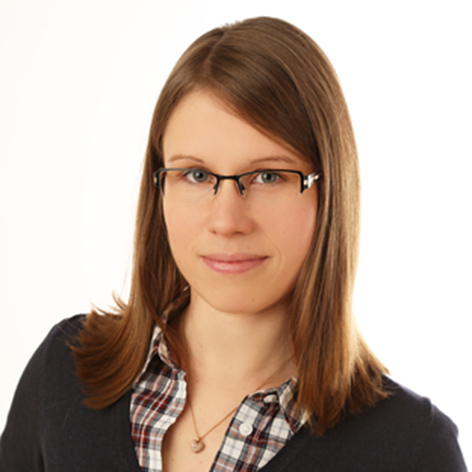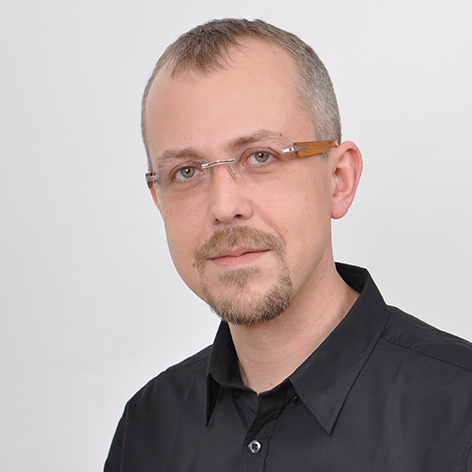Analytics
In the analytics department, the focus is on the characterisation of particles and dispersions using modern analytical methods. Furthermore, we develop new practical methods for the rapid and, if necessary, non-destructive characterisation of dispersions.
Our focus is on:
- Particle characterisation (e.g. particle size distribution)
- Determination of dispersion quality and dispersion stability
- Rheological investigations
- Performance of thermal analyses
Precision in processing and analysis thanks to state-of-the-art technology
The competences of the EZD are complemented by a close exchange of experience with the application laboratories of equipment manufacturers. This ensures that the equipment in our laboratories is always state of the art.
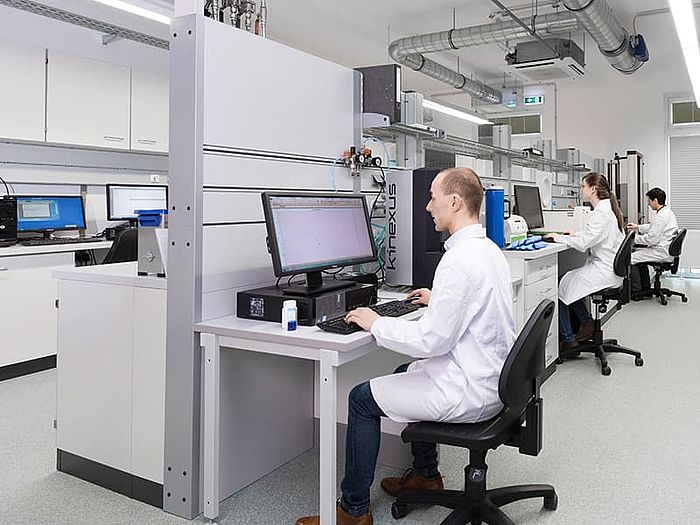
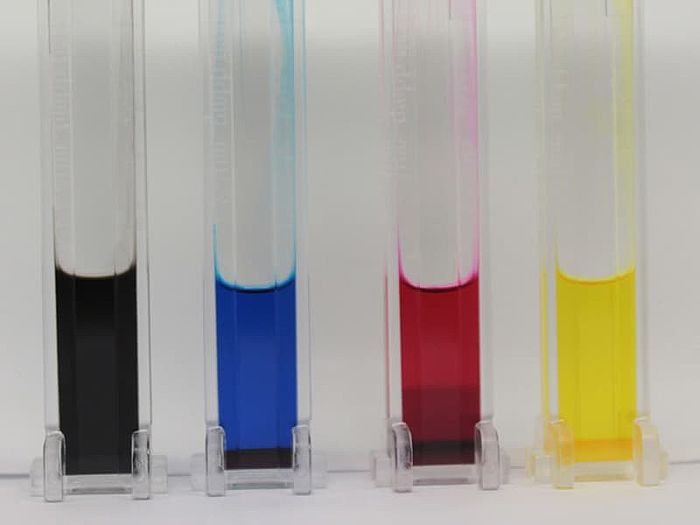
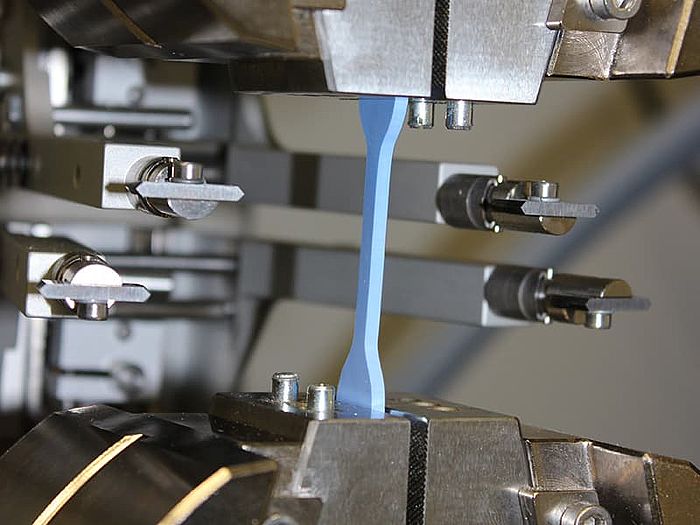
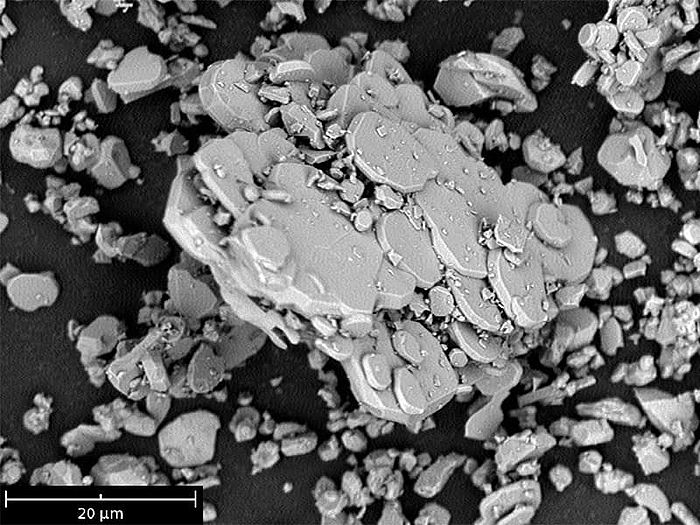
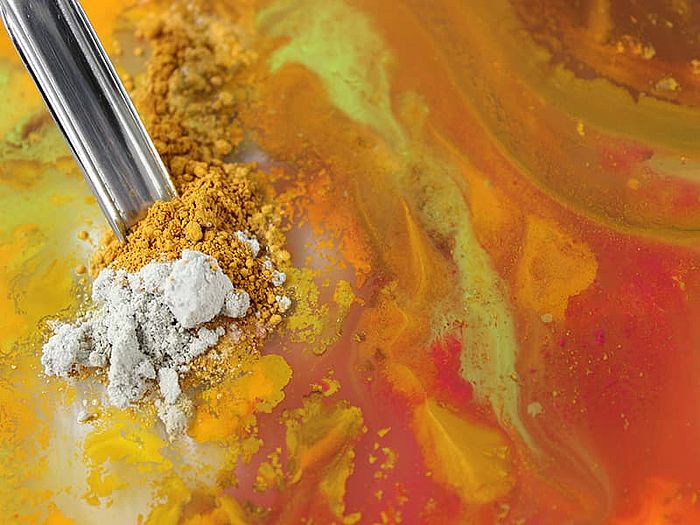
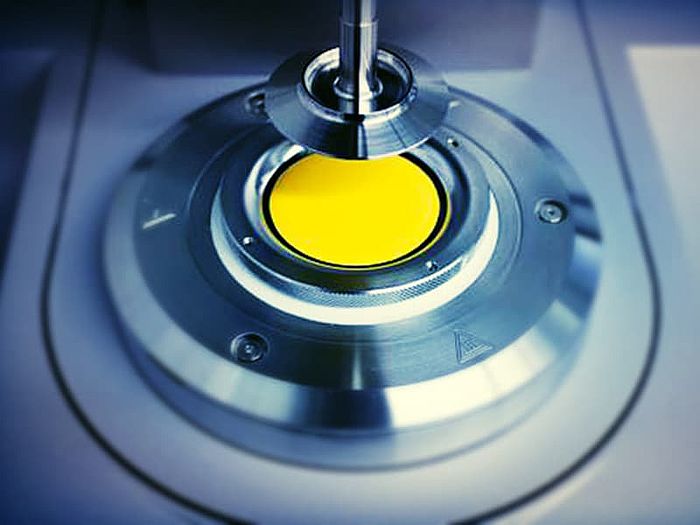
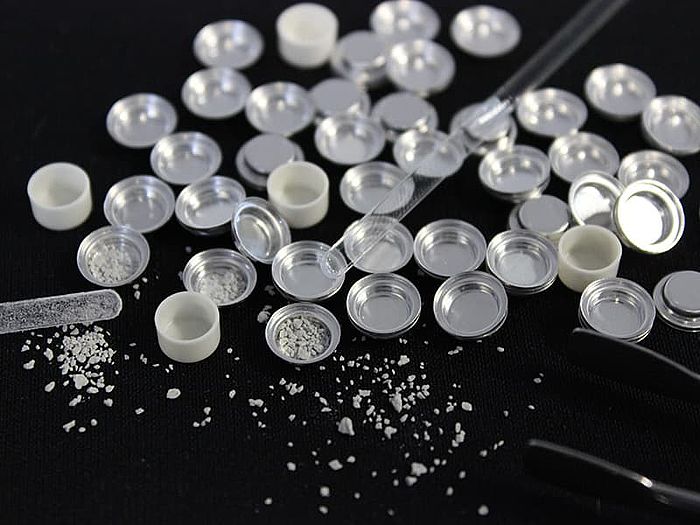
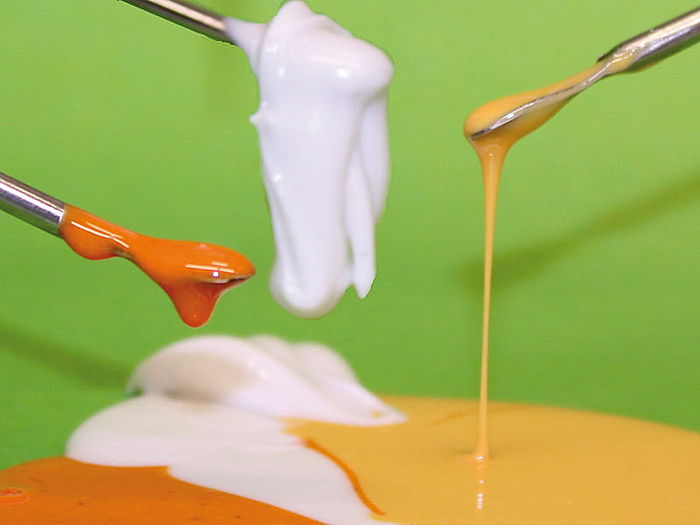
Technical equipment
Universal testing machine
- Tensile tests according to ISO 527
- 3-point bending tests according to ISO 178
- Tensile tests on CT specimens to ISO 13586
- 3-point flexure tests on SENB specimens according to ISO 13586
- Adhesion tests
- Force transducers: 10 kN and 0.5 kN
- Test speeds: 0.0005 - 2,000 mm/min
BET analysis
- Determination of specific surface area, pore volume and pore size distribution
- Isotherm determination (user-defined number of data points at any relative pressure values)
- Two measuring stations
- Adsorption gas: nitrogen
Dynamic light scattering (DLS)
- Determination of particle size (mean hydrodynamic diameter and size distribution) of suspensions and emulsions based on Brownian molecular motion
- 2 measuring devices: analysis of scattered light from three fixed scattering directions (forward, sideways and backward) in a classical DLS measuring device or by means of a fibre-optic DLS probe
- Measuring range particle size: 0.5 nm – 10 µm (depending on sample)
- Additionally determination of particle charge as well as chemical surface functionality of particles by zeta potential possible
- Additional determination of the refractive indices of dispersing media possible
Laser diffraction spectrometer
- Particle size measurement with simultaneous measurement of the particle shape due to the coupling possibility with dynamic image analysis
- Measuring range laser diffraction: < 100 nm – 2,000 µm
- Measuring range dynamic image analysis: 5 µm – 1,000 µm
- Wide selection of dispersing media possible
Static image analysis
- Determination of particle properties: size, shape, transparency, number, location
- Determination of particle size parameters: equivalent circle diameter, length, width
- Determination of particle shape parameters: Length / width ratio, roundness, convexity, elongation
- Magnifications: 2.5 x / 5 x / 10 x / 20 x / 50 x
- Size range: 1 µm – 1,000 µm
Gas pycnometer
- Gas pycnometer for density determination of powders and solids
- Measuring cell inserts 10 cm³, 50 cm³ and 135 cm³
- Temperature range: 20 °C – 50 °C
- Measuring pressure: 0.138 – 1.38 bar
Multi-wavelength analyser (LUMiSizer)
- Investigation of stability, segregation and consolidation of suspensions and emulsions
- Particle size analysis by using a special technology
- Possibility of simultaneous measurement of 12 samples
- Particle size range: 20 nm – 1,000 µm
- Rotation speed: 200 rpm – 4,000 rpm
- Measuring times: 1 s – 99 h
- Sample volume: 0.05 ml – 2.0 ml
- Solids concentration: 0.001 vol% – 90 vol%
- Temperature range: 4 °C – 60 °C
- Light source: multi-wavelength
Dielectric analysis (DEA)
- Characterisation of cross-linking processes in thermosets, coatings, adhesives and composites
- Two input channels
- Temperature range of the oven: 20 °C – 400 °C
- Heating rate: up to 40 K/min
- Frequency range: 1 mHz – 1 MHz
Differential scanning calorimetry (DSC)
- Measurement of transformation points: Material identification, impurities, curing processes, ...
- Temperature range: -50 °C – 700 °C
- Heating rates: 0.001 K/min – 200 K/min
- Gases: Nitrogen
- UV curing possible
Thermogravimetric analysis (TGA) with FT-IR coupling
- Insights into outgassing, decomposition, oxidative processes and organic fillers
- Temperature range: 20 °C – 1,100 °C
- Heating and cooling rates: 0.001 K/min – 200 K/min
- Gases: Oxygen, nitrogen
Stability analysis by means of zeta or flow potential
- The zeta potential is a parameter for the surface functionality or surface charge of particles in a liquid.
- The evaluation can be carried out in the form of the ACTUAL state or as a function of the pH value or salt and polyelectrolyte content (titration experiments).
- Parallel to this, the particle size can be determined by dynamic light scattering (DLS)
- Determination of the zeta potential by electrophoretic light scattering (ELS) based on the electrophoretic mobility (movement of the particles in the electric field).
- Particle size ELS: 4 nm – 100 µm
- pH range: 2 – 10
- Solid content: max. 70 Wt% (depending on sample)
- Determination of the streaming potential: Ions, which are sheared off the particles by displacement, collect on the porous wall of the PTFE sample container and can be picked up there by the integrated pair of electrodes.
- Particle size ELS: 1 nm – 300 µm
- pH range: 2 – 10
- Solid content: max. 40 Vol% (depending on sample)
Multi-wavelength analyser
- Investigation of the stability of segregations and consolidations of suspensions and emulsions
- Determination of particle size distribution
- Possibility of simultaneous measurement of 12 samples
- Particle size range: 20 nm – 1,000 µm
- Rotation speed: 200 rpm – 4,000 rpm
- Measuring times: 1 s – 99 h
- Sample volume: 0.05 ml – 2.0 ml
- Solids concentration: 0.001 vol% – 90 vol%
- Temperature range: 4 °C – 60 °C
- Light source: Infrared (870nm) and blue (470nm) laser light
Stability analyser
- Investigation of hydrodynamic particle density, separation velocity and particle size distribution in the Earth's gravity field
- Particle size range: 500 nm – 300 µm
- Measuring times: 0.5 s up to several months
- Solid concentration: 0.0015 vol% – 75 vol%
- Sample volume: 0.5 ml – 4.0 ml
- Light source: Infrared (870nm), red (630nm) and blue (470nm) laser light
Stability analyser with X-ray source
- Traceable classification and quantification of instabilities and segregation processes in suspensions by determining the X-ray transmission
- Concentration: up to 100 Vol%
- Measuring times: seconds, days, weeks
FT-IR spectrometer
- The FT-IR spectrometer is used for the identification of IR-active bonds, impurities and residues.
- By coupling with TGA (thermogravimetry) it is possible to analyse volatile substances and decomposition products.
- Qualitative analysis of powders, liquids and solids
- Accessories: ATR unit, diffuse reflection unit
- Light sources: MIR, NIR
- Spectral resolution: 0.4 cm-1
- Wavenumber accuracy: 0.01 cm-1 at 2,000 cm-1
Scanning electron microscope with EDX
- Investigation of particle morphology
- Analysis of fine surface structures
- Investigation of porosities and pore distributions
- Qualitative elemental analysis
- Analysis of impurities and residues
- Magnifications up to 100,000 x
- Resolution up to 50 nm
- Detector: 4-quadrant BSE
- Acceleration voltages: 5 kV, 10 kV, 15 kV
- EDX element detection: C (6) - Am (95)
Rheometer
- Investigation of flow behaviour and viscoelastic properties
- Investigation of curing processes (e.g. epoxy resins)
- Measuring systems: Cylinder, plate-plate and cone-plate
- Operating modes: shear rate control, shear stress control, deformation-controlled oscillation
- Temperature range: -5 °C – 200 °C
- Torque range: 10 nNm – 200 mNm
- Normal force range: 0.001 N – 20 N
- Measuring gap accuracy: 0.1 µm
- Sample volume: depending on measuring geometry
Dielectric analysis (DEA)
- Characterisation of cross-linking processes in thermosets, paints, adhesives and composites
- Two input channels
- Temperature range of the furnace: 20 °C – 400 °C
- Heating rate: up to 40 K/min
- Frequency range: 1 mHz – 1 MHz
Powder rheometer
Powder fluidization cell
Sample volume: 60 ml to 120 ml
Torque range: 10 nNm to 300 mNm (depending on the device)
Normal stress range: up to 22 kPa
Dust protection:
d ≥ 5 µm: 100 % dustproof
5 µm ≥ d >1 µm: 90 % to 95 % dustproof
Fluidization options: Scientific option: Choice of 3 mass flow controllers for a mass flow of 0.05 l/min up to 80 l/min, with pressure sensor
Quality control option: Proportional valve
Measurement methods:
- Basic Flowability Energy (BFE), specific energy
- Cohesive strength
- Caking or time-dependent behavior
- Compressibility (bulk density, Carr index, Hausner factor)
- Tensile strength
- Warren-Spring cohesion
- Wall friction and adhesion
- Pressure drop
- Permeability
- Air retention capacity
- Fluidized bed viscosity
- Segregation
- Easily customizable methods
Measuring systems:
- Two-blade agitator
- Two-blade helix agitator
- Warren Spring geometry
- Powder preparation set with exchangeable disks (stainless steel, air-permeable stainless steel, PTFE, other materials on request)
- Cylinder
- Profiled cylinder
Other accessories:
- Uncoated glass/FTO-coated glass/steel measuring tube
- HD webcam
Optical microscope with heating table
- Characterisation of powders and surfaces
- Observation of melting and crystallisation processes
- Transmitted light / incident light
- Bright field / dark field / polarisation
- Magnifications up to 1,000x
- Heating table temperature: 20 °C – 420 °C
- Heating rates: 0.01 – 50 °C/min
Scanning electron microscope with EDX
- Investigation of particle morphology
- Analysis of fine surface structures
- Investigation of porosities and pore distributions
- Qualitative elemental analysis
- Analysis of impurities and residues
- Magnifications up to 100,000 x
- Resolution up to 1.3 nm
- Detector: 4-quadrant BSE
- Accelerating voltage: 5 kV, 10 kV, 15 kV
- EDX element detection: C (6) – AM (95)
Adhesion
- The adhesion testers automatically perform tear-off tests to assess the adhesion/cohesion of coatings to metal, wood, concrete and similar substrates.
- Test stamp size 20 mm and 50 mm
- Standards DIN EN ISO 16276-1, DIN EN ISO 4624, ASTM D4541
Coating thickness measurement
- Ultrasonic coating thickness gauge for different substrates (metal, plastic, glass etc.)
- Measuring range 13 μm – 1,000 μm
- Minimum layer thickness of a single layer: 13 μm
Tensiometer
- Measurement of the interfacial and surface tension of liquids using the plate method
- Measurement of contact angles on rectangular, round and cylindrical samples
- Contact angle measurement on powders using the Washburn method
- Determination of liquid density
- Determination of penetration and sedimentation of dispersions
- Measurement of surfactant properties; CMC determination; dosing via micro-dispenser
- Temperature range: 20 °C – 100 °C
- Measuring range: 1 mN/m – 2,000 mN/m
Abrasion resistance
- Automatic washability and abrasion tester including 2 pumps for liquid supply
- Lifting/pushing speed: 1 – 60 strokes/min
- Stroke/push length: 20 mm – 300 mm
- Max. specimen width: 70 mm per channel (with 4 tools)
- Max. specimen length: 350 mm
- Test according to ISO 11998, ASTM D 4213, ASTM D 2486
Contact angle measuring device
- Portable instrument for measuring the contact angle (water, diiodomethane)
- Calculation of surface free energy according to Owens-Wendt-Rabel-Kaelble, Wu, Zisman and Fowkes
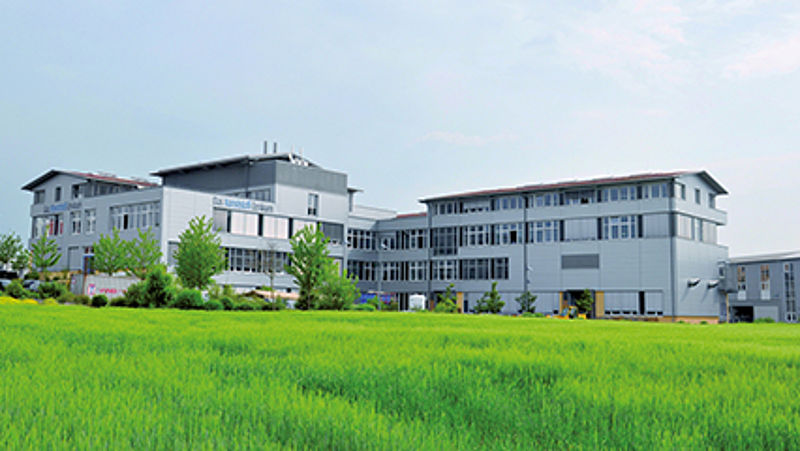
97076 Würzburg
Telefon: +49 931 4104-0
E-Mail: info@skz.de
Route berechnen
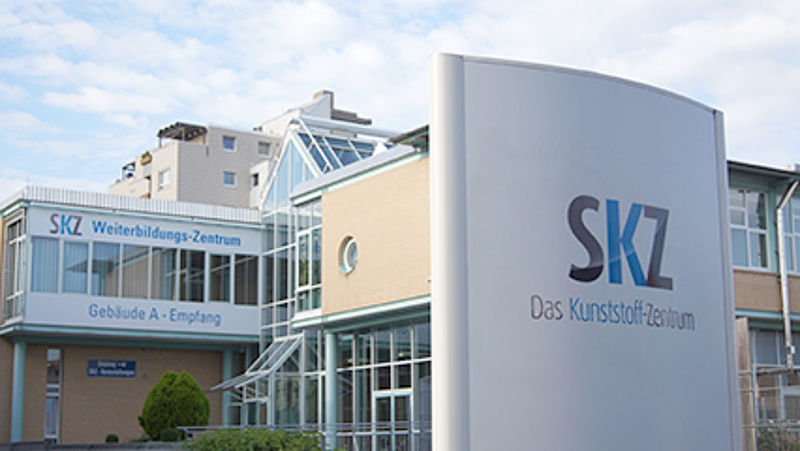
97082 Würzburg
Telefon: +49 931 4104-123
E-Mail: training@skz.de
Route berechnen
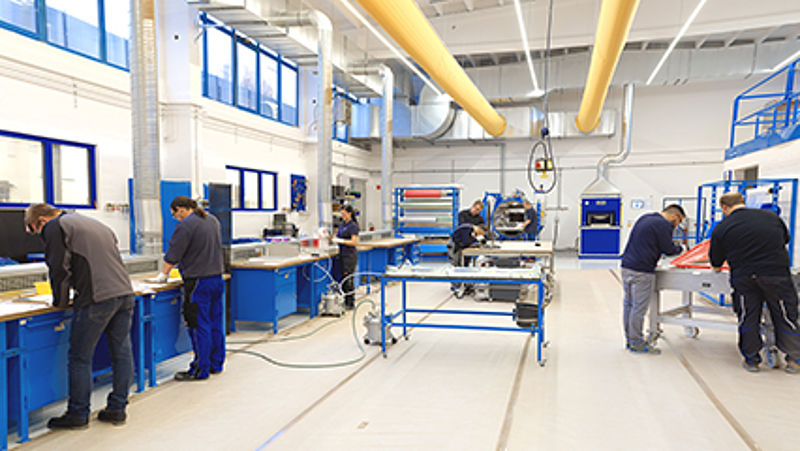
Köthener Str. 33a
06118 Halle (Saale)
Telefon: +49 345 53045-0
E-Mail: halle@skz.de
Route berechnen
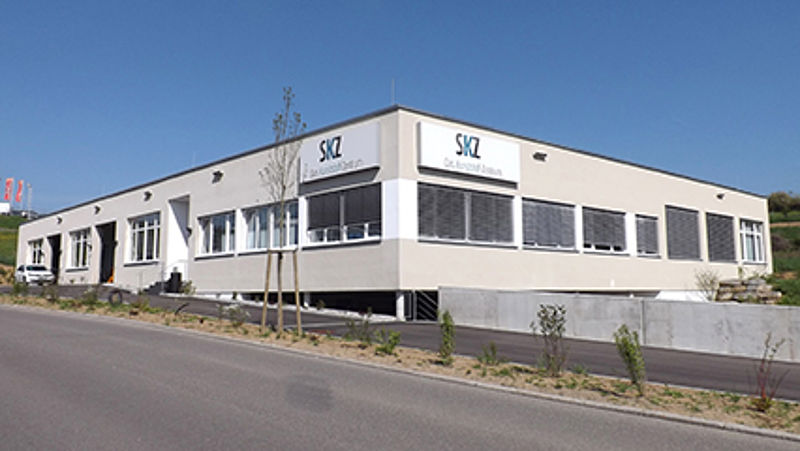
Rauher Grund 9
72160 Horb am Neckar
Telefon: +49 7451 62457-0
E-Mail: horb@skz.de
Route berechnen
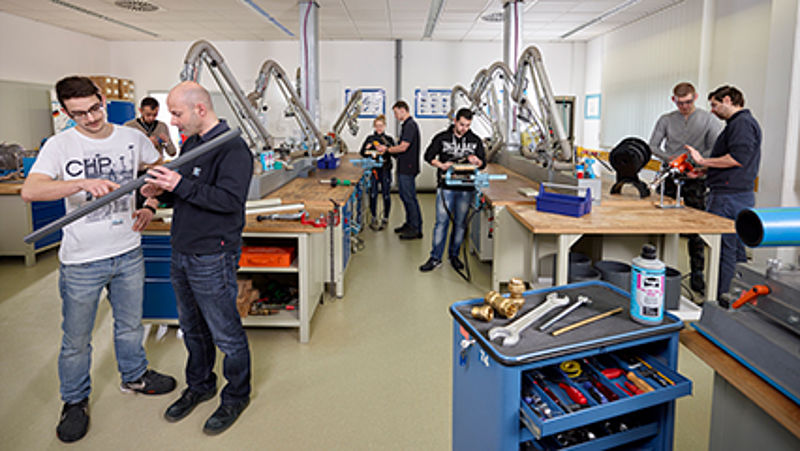
Woltorfer Str. 77, Halle G
31224 Peine
Telefon: +49 5171 48935
E-Mail: peine@skz.de
Route berechnen
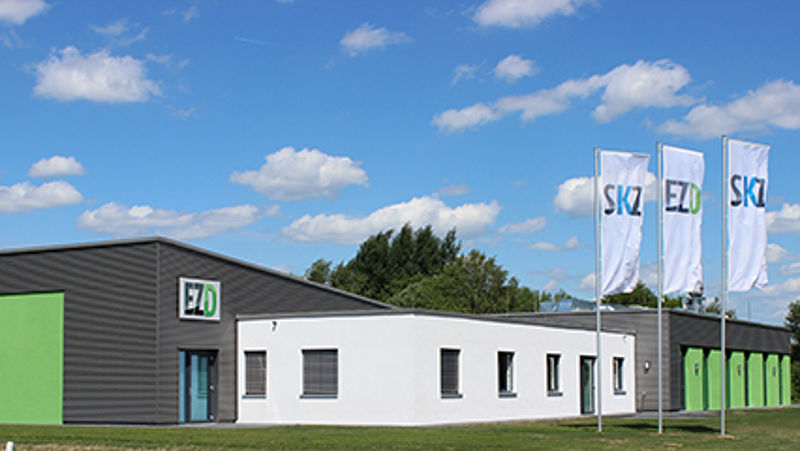
Weißenbacher Str. 86
95100 Selb
Telefon: +49 9287 99880-0
E-Mail: ezd@skz.de
Route berechnen
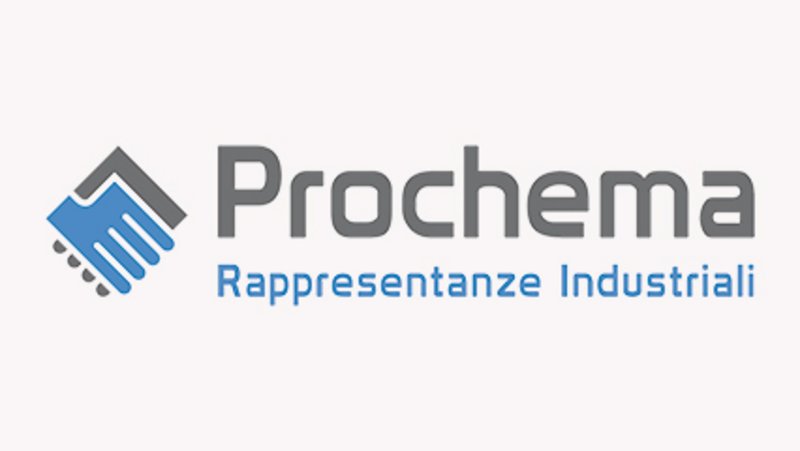
Via Buonarotti 175
20900 Monza, Italy
Telefon: +39 039 281561
E-Mail: info@prochema.it
Route berechnen
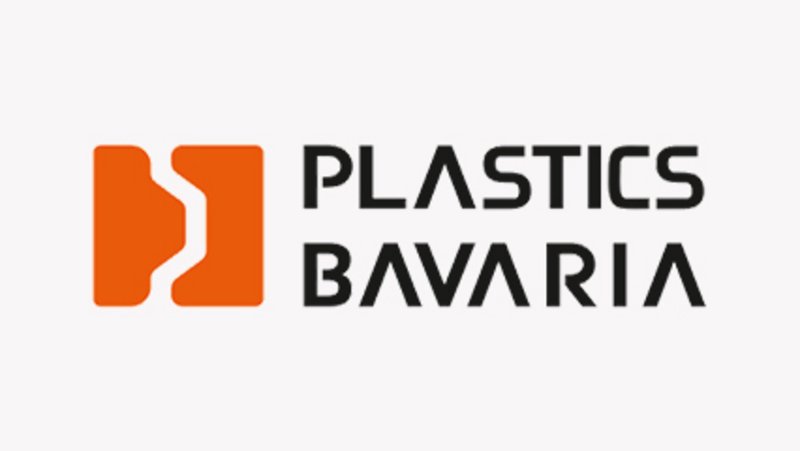
Str. Iancu Jianu, nr. 26
500178 Braşov, Romania
Telefon: +40 268 412 559
E-Mail: office@plastics-bavaria.ro
Route berechnen
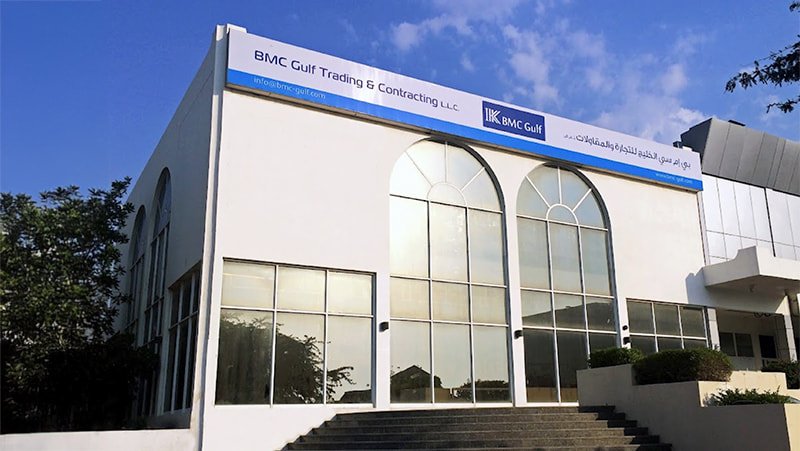
Muntazah Complex (Exit - 25)
Jebel Ali Village - Dubai (VAE)
Telefon: +971 4 8845001
E-Mail: info@skz-me.com
Route berechnen
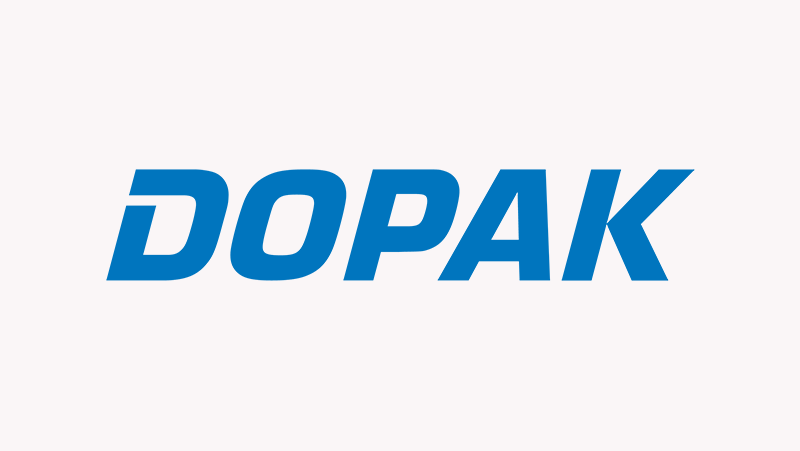
Ul. Kwiatkowskiego 5a
52-407 Breslau, Poland
Telefon: +48 71 35 84 000
E-Mail: dopak@dopak.pl
Route berechnen
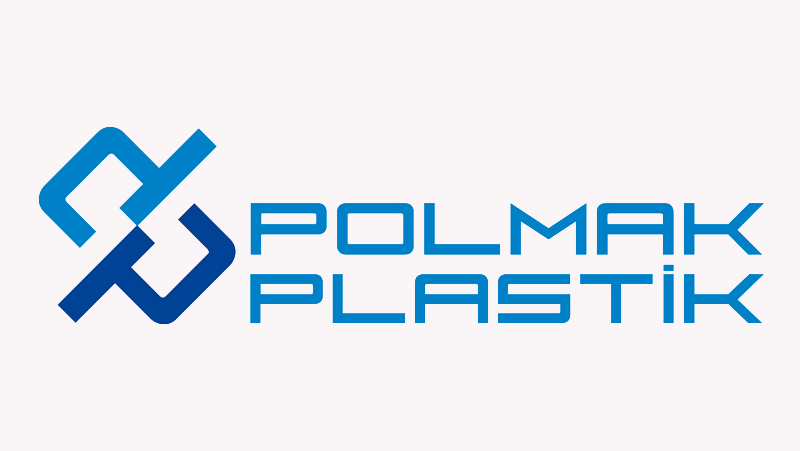
Ikitelli OSB Demirciler Sanayi Sitesi, E2 Blok No:420
34490 Başakşehir İstanbul | Turkey
Telefon: +902126718170
E-Mail: info@polmakplastik.com
Route berechnen
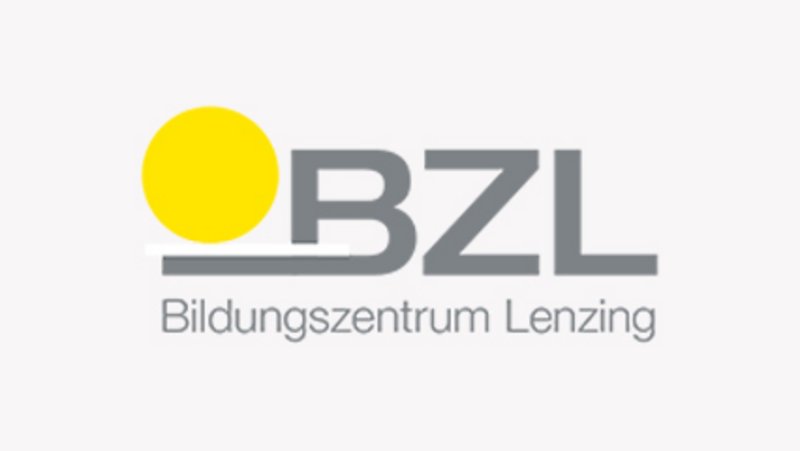

European Centre for Dispersion Technologies (EZD)
c/o SKZ – KFE gGmbH
Weißenbacher Str. 86
95100 Selb
Phone: +49 9287 99880-0
eMail: ezd@skz.de


